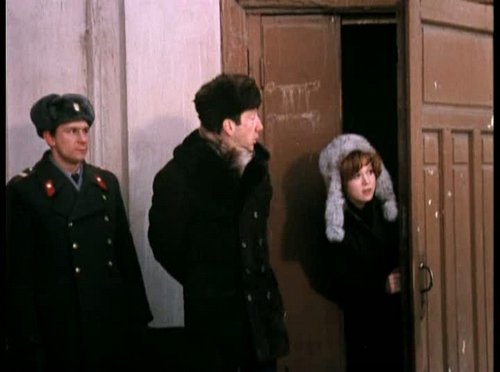The above scene from 1970s film, Mimino, came to mind after reading a Wall Street Journal article about Supreme Court Justice Stephen Breyer titled “Breyer Makes Case for Justices’ Adherence to Constitution“. The part that brought it to mind was the following paragraph:
His [Breyer’s] concern about public confidence in the high court deepened earlier this year when security consultants persuaded the justices to close its front entrance. The marble steps and brass doors represented “dignified openness and meaningful access to equal justice under law,” Justice Breyer wrote in a dissent. Relegating visitors to a cramped side door, he suggested, sent the opposite message.
I’m impressed that Breyer thinks about the physical symbolism of government buildings. I do too, though I must admit that I never thought of the point he makes.
But I instantly remembered that beat-up side door to the building where our hero, Mimino, is on trial. The man standing in the middle of the scene has just been sentenced to five years in prison. A courtroom worker is calling for our hero’s friend, Khachikyan, to come and testify. He had been told to go away from the courtroom until he was needed, but not to go so far away that he couldn’t be found. In a scene preceding this one, the plaintiffs had entered through this same door, getting into a verbal confrontation with Khachikyan on the way in. While waiting his turn, Khachikyan tried to suborn perjury from anyone who he imagined could be talked into being a potential witness, including, as it turned out, the defense attorney’s father, her husband, and the man who had just been sentenced to five years. In a subsequent scene, the court-appointed defense attorney seems to leave the building by this same entrance, and then does a little skip and dance to celebrate getting her client off with a very light penalty.
So even though it’s an unimposing side door, and lacks the dignity that Justice Breyer spoke of, this one doesn’t seem to hinder openness, at least not in a Soviet comedy.
I don’t know if this building represents a usual sort of court building in Moscow, but it’s definitely not an imposing entrance with Greek columns and a large portico to make visitors seem small and impress them with the power and grandeur of the government, as in many of our court buildings — at least the older ones. In keeping with the architecture, the proceedings are a relatively relaxed affair, though the stakes are high for our hero, considering what would seem to those of us in the U.S. to be a relatively minor accusation against him.
Our own Calhoun County, Michigan courthouse is not one of the grand buildings that we used to have in our country. The new building is not even called a courthouse. It’s called a “justice center,” which is a term that conveys an aura more like that of the Moscow court building above than one with “marble steps and brass doors.” In fact, the interior of the new building, and the interior of the courtrooms, is more in the utilitarian Soviet style than the traditional American style.
In the Calhoun County center there is opportunity for jurors, visitors, witnesses, and lawyers to mingle in the hallways. I am told that some court buildings are designed to keep the participants separated more from jurors. Ours is not. When I’ve been on jury duty we’ve been asked to stay in the jury assembly room except for necessary bathroom breaks, etc., so as not interact with the participants in any way that might taint the trial. And, of course, except for the times when we’re actually called into a court room. Time before last, the jury coordinator turned on a TV in the jury assembly room for people to watch while they waited to be called for jury selection. I can’t stand television, so I took a book out into the hall where I could read in relative peace. To cooperate with the “no mingling” policy, I stood facing a wall so as not to encourage any greetings or discussion with other people passing by. Afterwards, I complained in writing, saying it was above and beyond the call of duty to have to sit in a room with television. Maybe it did some good, because last time I was on jury duty they didn’t turn the beast on.
Next time — the physical symbolism inside courtrooms. Unless some other topic strikes my fancy, that is.
